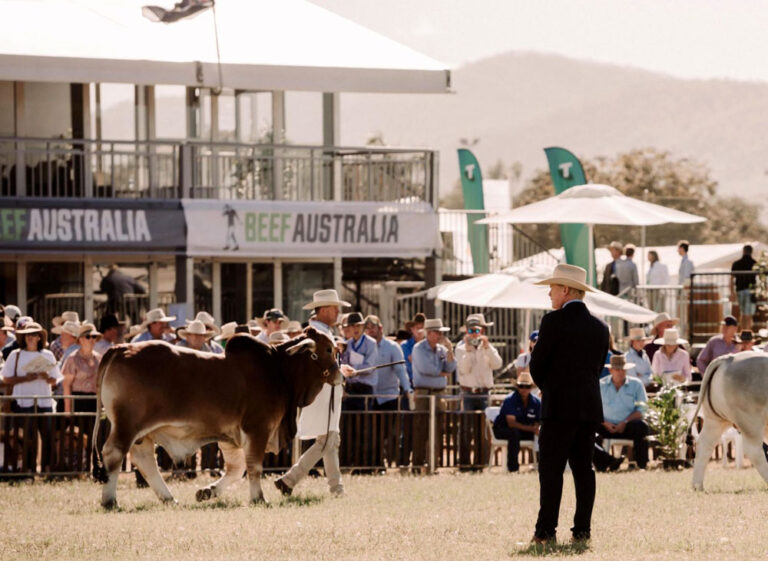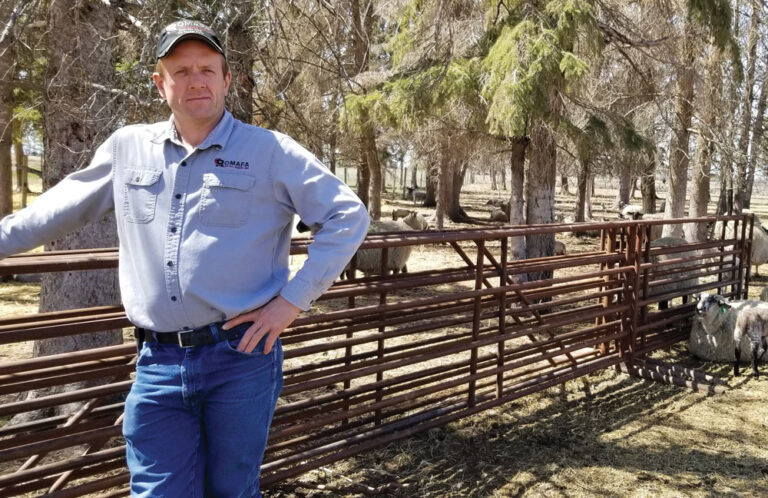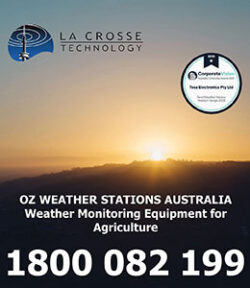Across all states growers are expected to harvest 62 million tonnes of grain in the winter season 2025-26 to bank the third-highest harvest on record

Growers in three states in particular took an educated risk to dry sow at the start of the 2025-26 winter season and joined other states with better soil moisture to plant down an estimated 24.9 million hectares, just short of the 25 million hectare record set last year.
As a result, winter crop production is expected to increase by 2% to 62 million tonnes in 2025-26, 26% above the 10-year average to 2024-25, and if realised, would be the third highest on record.
This forecast reflects expected improvements in production in Western Australia, South Australia and Victoria and above-average production in northern New South Wales and Queensland.
And despite concerns of the very dry and sporadic start to the winter cropping season in South Australia and Victoria, improved seasonal conditions throughout winter have boosted production prospects across most major winter cropping regions.
Some growers had to dig deep at the time to sow, as conditions were most unfavourable in South Australia, Western Victoria and southern New South Wales where many crops were dry sown with limited soil moisture.
Fate turned out to be on the side of growers as average July rainfall in South Australia and Victoria combined with follow-up rainfall to provide enough moisture for crop emergence and establishment, albeit three to four weeks late, yield potential is cited as positive.
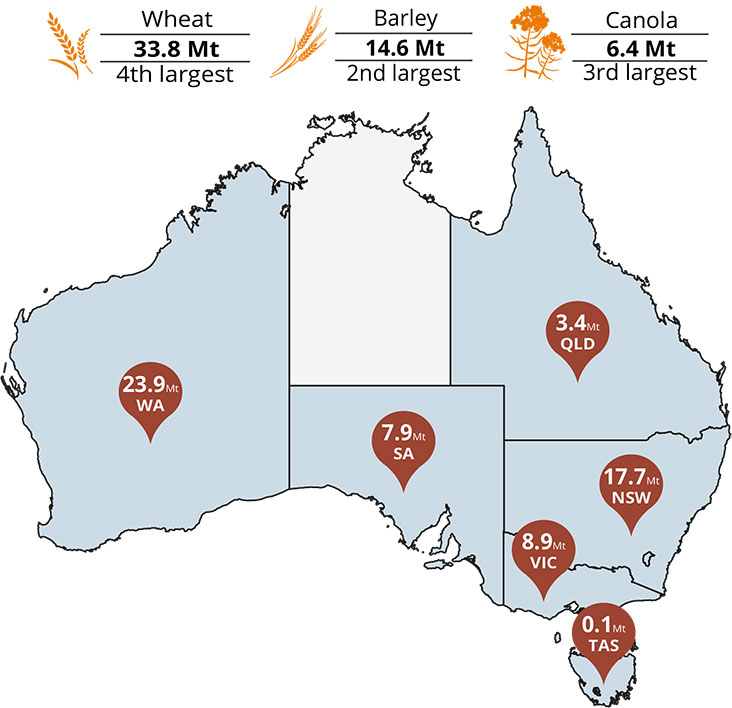
However, rainfall in southern New South Wales has not been as favourable with crops receiving just enough to maintain growth. Further rainfall will be crucial for current yield potential to be realised.
By contrast, conditions have been favourable in Western Australia, Queensland, and northern New South Wales, reflecting timely rainfall that has maintained soil moisture profiles. These conditions have placed crops in an excellent position heading into the final growth period.
According to the latest three-month rainfall outlook there is a 65% to 80% chance that spring rainfall will be above average across cropping regions in Queensland and New South Wales, and a 55% to 70% in Victoria and South Australia.
Meanwhile, cropping regions in Western Australia have a lower chance of receiving above-average rainfall, forecast at between 35% and 50%.
Overall, this generally favourable spring rainfall outlook, if realised, is expected to support crop development and boost yield potential.
Pundits were cautious at the start of the season, but since then, overall winter crop production has been revised up 12%, reflecting much better-than-expected conditions in most cropping regions, with upwards revisions for all states.
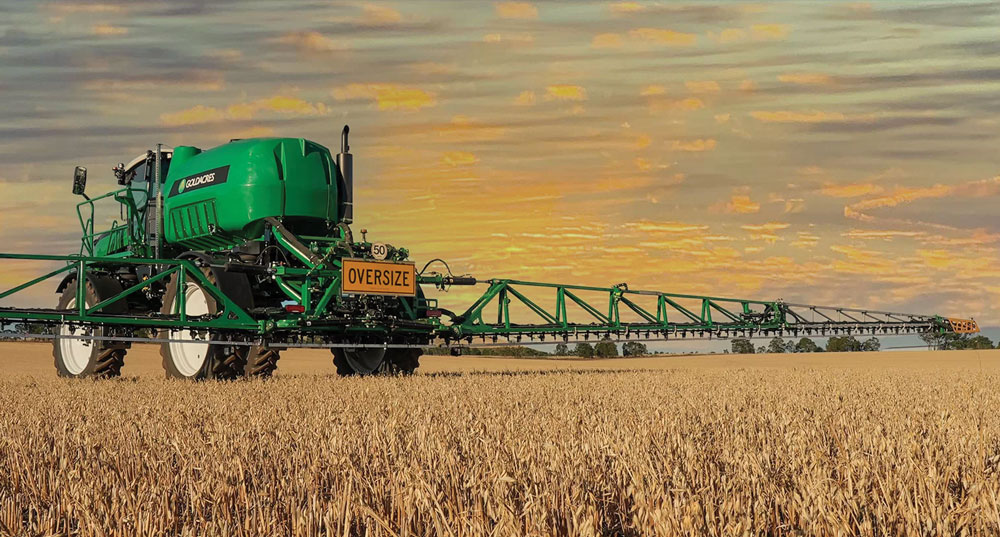
Expectations from crop varieties
Wheat production is forecast to be in line with last year at 33.8 million tonnes, a slight 1% fall at worst and still be 22% above the 10-year average to 2024-25.
Barley production is forecast to increase by 10% to 14.6 million tonnes in 2025-26, 23% above the 10-year average to 2024-25.
Canola production is forecast to increase by 1% to 6.4 million tonnes in 2025-26, 34% above the 10-year average to 2024-25.
Lentil production is forecast to increase by 34% to a record 1.7 million tonnes in 2025-26, 95% above the 10-year average to 2024-25. This expansion reflects a record area planted.
Chickpea production is forecast to take the greatest hit, and fall by 7% to 2.1 million tonnes in 2025-26, with the expansion in area planted expected to be offset by lower yields.

How the states are expected to fare
Western Australia
Winter crop production in Western Australia is forecast to increase by 4% to 23.9 million tonnes in 2025-26, up from 23.0 million tonnes in 2024-25.
This forecast represents a 15% upward revision from early season predictions and if realised will be 33% above the 10-year average.
The forecast year-on-year increase in production is largely attributable to higher yields, as a result of above-average rainfall in July and early August in key northern and southern regions.
A largely neutral rainfall outlook and forecast cooler temperatures for September across Western Australia, is forecast to support current yield potential.
Despite the unfavourable dry conditions experienced in autumn and June, subsequent above-average rainfall in key northern and southern cropping regions has supported crop establishment and growth in WA.
Timely rainfall and warmer growing conditions in July and early August accelerated crop development, which had been later than normal due to the dry start to the season.
Improved seasonal conditions have reinforced yield potential, particularly benefiting cereal crops in the northern and southern regions. Rainfall received in late winter has also improved production prospects in central cropping regions, which had previously only received below-average rainfall during May and June.
According to the latest three-month rainfall outlook, it is less likely for spring rainfall totals to exceed median levels across key northern cropping regions.
Close to average rainfall is more likely in September, and daytime temperatures are expected to be average to below average in most cropping regions during September and October.
The outlook for early spring rainfall and mild temperatures should support winter crops through critical development stages and provide favourable growing conditions to maintain above-average yields across most WA cropping regions.
Winter crop yields in WA are forecast to rise by 1% in 2025-26 and remain 25% above the 10-year average to 2024-25, reflecting the favourable conditions experienced during the season in northern and southern cropping regions and a close to average rainfall outlook.
However, these current yield expectations are highly reliant on timely in crop rainfall to be realised.
Area planted to winter crops in Western Australia in 2025-26 is estimated to have increased by 3% from 2024-25 to just over 9 million hectares, 7% above the 10-year average to 2024-25.
This largely reflects an increase in area sown in southern Western Australia, where above-average July and August rainfall has resulted in strong yield potential for growers.
Winter rainfall has boosted soil moisture levels from below-average in autumn to average in central cropping regions and above average in the northern and southern regions.
The area planted to wheat in WA is estimated at 4.65 million/ha, assuming a yield of 2.73 tonnes/ha for a production total of 12.7 million tonnes, up 0.4%.
It is estimated WA growers planted down an area of 1.9 million/ha of barley, assuming a yield of 3.37 tonnes/ha for a production total of 6.4 million tonnes, up 6.7%.
While the area planted for canola is estimated at 1.70 million/ha, with an assumed yield of 1.94 tonnes/ha it is expected to show a production total of 3.3 million tonnes, up 13.8%.
Lupins are also gaining momentum with WA growers, with an estimated 0.40 million/ha, planted with an assumed yield of 1.63 tonnes/ha. Leading to a production total of 0.65 million tonnes, up 11.1%.
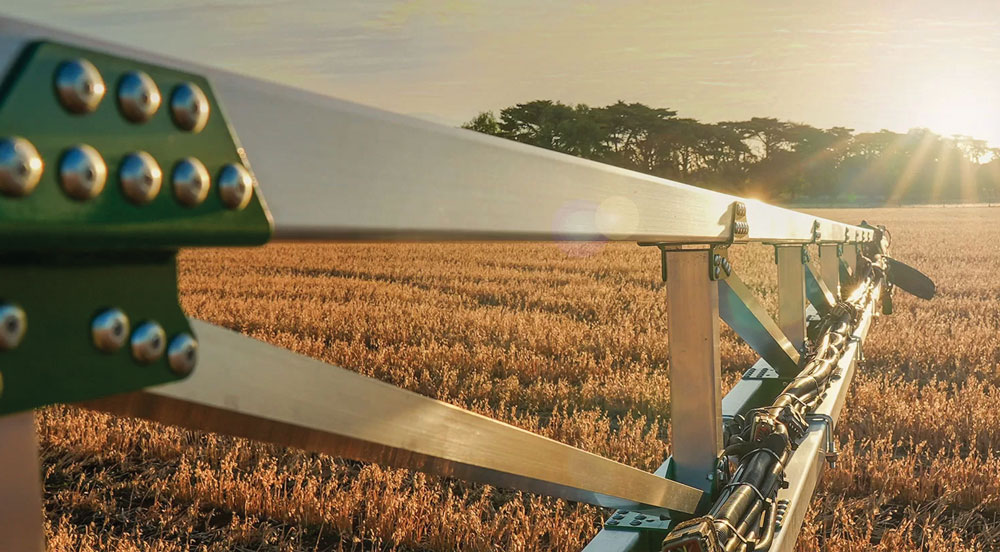
New South Wales
Winter crop production in New South Wales is forecast to decrease by 14% to 17.7 million tonnes in 2025-26 but still remain a healthy 38% above the 10-year average to 2024-25.
This latest forecast represents a further 12% upward revision from start-of-season estimates, when a positive conditions in northern New South Wales, combined with favourable winter rainfall, placed crops in an excellent position heading into spring.
However, conditions in parts of central and most of southern New South Wales have not been as favourable, with dry conditions persisting throughout winter.
Winter crop yields are currently forecast to average 2.6 tonnes/hectare, 22% above the 10-year average to 2024-25, mainly reflecting the excellent conditions in northern New South Wales, but also the forecast of improved climatic conditions in southern growing regions.
The climate outlook issued by the Bureau of Meteorology indicates a strong tendency toward above-average rainfall for most cropping regions in New South Wales.
With average to above average soil moisture levels across much of northern New South Wales at the end of winter, combined with a positive spring rainfall outlook, it is expected to support above average yield prospects.
However, yield prospects in southern cropping regions will be highly reliant on adequate and timely rainfall to realise current yield expectations.
Area planted to winter crops in New South Wales is estimated to have fallen by 3% to 6.9 million hectares, which is still 21% above the 10-year average to 2024-25.
The area planted to wheat is estimated to be down 5% year-on-year but remains 16% above the 10-year average to 2024-25.
Barley area is estimated to be unchanged year-on-year at 1 million hectares.
While the area planted to canola is estimated to be down 9% year-on-year, reflecting very dry conditions during autumn in southern cropping regions of New South Wales, where the majority of canola is grown.
The area planted for wheat in NSW is estimated at 3.70 million/ha, assuming a yield of 2.89 tonnes/ha for a production total of 10.7 million tonnes, down 17.1%.
It is estimated NSW growers planted down an area of 1.00 million/ha of barley, assuming a yield of 3.15 tonnes/ha for a production total of 3.15 million tonnes, down 7.4%.
While the area planted for canola is estimated at 0.90 million/ha, with an assumed yield of 1.78 tonnes/ha it is expected to show a production total of 1.6 million tonnes, down 15.8%.
Chickpeas were still high in the frame for NSW growers with a high estimated of 0.59 million/ha planted. With an assumed yield of 2.08 tonnes/ha, it could represent a production total of 1.23 million tonnes.

Victoria
Winter crop production in Victoria is forecast to reach 8.9 million tonnes, up 14% from 2024-25, with improved seasonal conditions boosting production prospects.
With winter crop production now expected to be 8% above the 10-year average of 8.2 million tonnes, this represents a 7% upward revision from early season forecasts, and if achieved, would be the sixth highest production total on record for VIC.
This result belies the mostly dry and sporadic start to the winter cropping season, followed by average to above average June and July rainfall across the north central and western cropping regions to support crop establishment and growth.
Warmer conditions throughout July and early August accelerated crop development, especially across areas in the eastern Mallee that also benefited from late April rain.
Improved seasonal conditions have lifted yield potential, mostly benefiting cereal crops. By contrast, planting and establishment have been less favourable in some areas across the northwest of the Mallee. Timely and sufficient rainfall throughout spring in these areas will be critical to support crop development and grain fill.
According to the latest three-month rainfall outlook, it is likely to exceed median levels across most cropping regions in Victoria. Above-average forecast rainfall is likely to support current yield and production prospects.
However, warmer-than-average temperatures throughout spring present a downside risk to the forecast given current low levels of stored subsoil moisture in some regions.
Winter crop yields are forecast to rise by 15% to 2.4 tonnes/hectare, 2% above the 10-year average to 2024-25.
The average wheat yield is forecast to increase by 17% to 2.7 tonnes/hectare, just above the 10-year average.
Similarly, the average barley yield is forecast to increase by 21% to 2.9 tonnes/hectare, 12% above the 10-year average, reflecting barley’s ability to withstand drier conditions compared to other cereals.
The average state canola yield is forecast to increase by 1% to 2.1 tonnes. Canola yields are comparatively lower given the drier start to the season and the crops higher water demand.
Area planted to winter crops in Victoria in 2025-26 is estimated to have remained flat at 3.7 million hectares, 7% above the 10-year average to 2024–25.
Despite a relatively dry start in most cropping regions, planting intentions remained positive. Additionally, areas traditionally planted to wheat and canola have shifted into barley and lentils, with lentils incorporated more widely into crop rotations.
The area planted for wheat in VIC is estimated at 1.47 million/ha, and assuming a mid-yield of 2.72 tonnes/ha, production is expected to total 4.0 million tonnes, up 14.3%.
It is estimated VIC growers planted down an area of 0.85 million/ha of barley, assuming a yield of 2.94 tonnes/ha for a production total of 2.5 million tonnes, up .025%.
While the area planted for canola in VIC is estimated at 0.54 million/ha, an assumed yield of 2.13 tonnes/ha is expected to show a production total of 1.15 million tonnes, down 4.2%.
Lentils continued their favoured position with VIC growers, estimated at 0.53 million/ha, planted and with an assumed yield of 1.42 tonnes/ha, is expected to show a production total of 0.75 million tonnes.
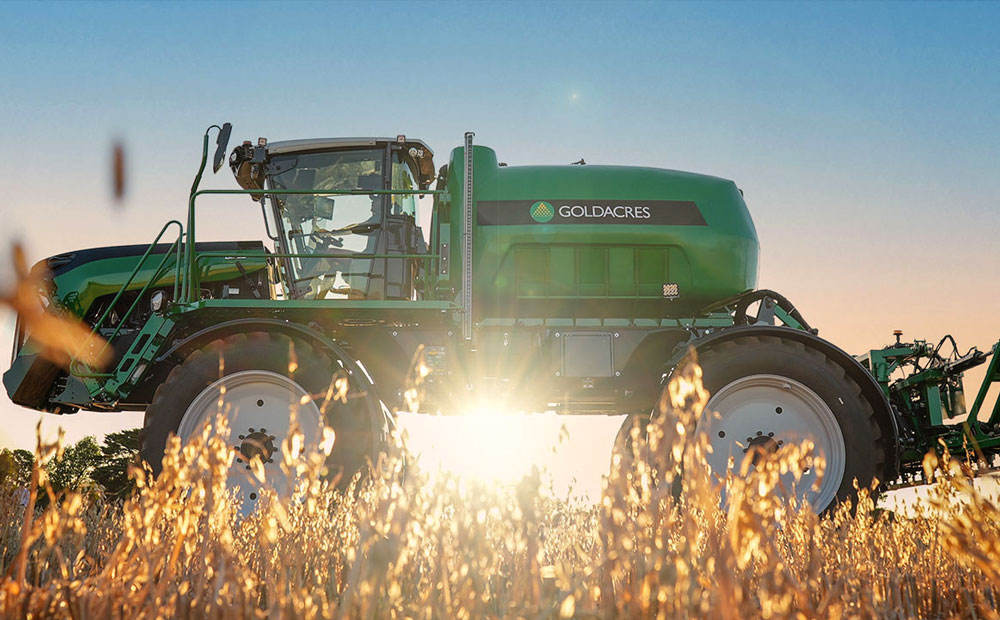
South Australia
Winter crop production in South Australia is forecast to rise to 7.9 million tonnes in 2025-26 from a dreadful harvest of 5.3 million tonnes in 2024-25.
This represents growers getting back on track with an upward revision of 5% from early season forecasts to now be 1% above the 10-year average.
Following the season shocker last year, early on, the below-average rainfall at the start of winter delayed germination for growers’ game enough to proceed with dry-sown crops, with upper-layer soil moisture also below average.
However, there was some relief as much-needed rainfall fell across many parts of South Australia’s cropping regions in June and July, including the Eyre and Yorke Peninsulas, vastly improving prospects and upper-layer soil moisture.
But with the caveat that lower-layer soil moisture remained below average to extremely low in other areas, particularly in marginal cropping regions like the Mallee. The late start to the season and variable conditions to date have resulted in uneven crop establishment and development, with paddocks at varying growth stages.
The Bureau of Meteorology’s latest climate outlook indicates that above-average rainfall is likely across much of South Australia, with a 75% chance of 50-100 millimetres forecast across most cropping regions.
If realised, these falls are likely to be sufficient to support the growth and development of winter crops. Following a delayed start to the season and rising temperatures forecast in the outlook, yield prospects now depend on receiving adequate and timely rainfall during spring.
Frost continues to remain a threat to yield during the critical flowering and growth stage, presenting an additional downside risk to yield potential.
Winter crop yields are forecast to increase by 49% to 2.0 tonnes/hectare, with the average state yield 3% below the 10-year average to 2024-25.
Canola yields are expected to increase to 1.6 tonnes/hectare, although this remains 8% below the 10-year average.
Wheat and barley yields are also forecast to rise significantly, reaching respectively 2.1 tonnes/hectare and 2.4 tonnes/hectare. Wheat yields are projected to be 2% below the 10-year average to 2024-25, while barley yields are expected to be 3% above the 10-year average.
The increase in yields across all major crops largely reflects above-average July rainfall across most South Australian cropping regions, which has supported crop development and improved soil moisture profiles.
The area planted to winter crops is estimated to have remained largely unchanged year-on-year, holding at a historically high level of 3.9 million hectares, 5% above the 10-year average to 2024-25.
Barley planting is estimated to have increased by 3% to 835 thousand hectares, while lentil area is forecast to rise by 10% to 515 thousand hectares.
This marks a notable shift in planting decisions, with growers favouring lentils over other major crops in 2025-26, a move driven by strong price signals and the crop’s resilience to adverse weather conditions.
These gains are anticipated to come largely at the expense of canola, as growers held back from expanding plantings significantly due to the dry start to the growing season and less favourable rainfall forecast at the time of sowing.
Wheat area is estimated to have eased slightly to 1.47 million/ha, assuming a yield of 2.72 tonnes/ha for a production total of an improved 4.0 million tonnes, up 14.3%.
It is estimated that SA growers planted down an area of 0.85 million/ha of barley, assuming a yield of 2.4 tonnes/ha for a production total of an improved 2.5 million tonnes.
While the area planted for canola in SA is estimated at 0.54 million/ha, with an assumed yield of 2.13 tonnes/ha is expected to show a production total of 1.15 million tonnes.
Growers in SA continued to chase big returns for Lentils with an increase in the planted area for Lentils, estimated at 0.53 million/ha, and with an assumed yield of 1.42 tonnes/ha is expected to show a production total of 0.75 million tonnes.
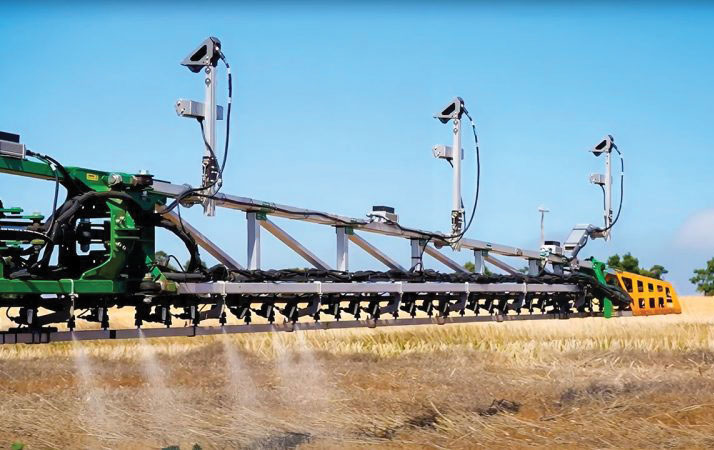
Queensland
Winter crop production in Queensland is forecast to fall by 10% to 3.4 million tonnes in 2025-26. The overall fall in winter crop production reflects a year-on-year fall in area and lower expected yields for most winter crops.
Despite the fall, this result would still be 50% above the 10-year average to 2024-25 of 2.3 million tonnes, supported by high soil moisture levels at planting and favourable rainfall during the growing season.
Area planted to winter crops in Queensland in 2025-26 is estimated to have remained relatively unchanged compared to last year at 1.6 million hectares, 27% above the 10-year average to 2024-25.
Area planted to wheat and barley is expected to fall by 2% and 8% respectively but remain above the 10-year averages to 2024-25. By contrast, area planted to chickpeas is expected to rise by 7% in 2025-26, supported by favourable chickpea prices.
Winter crop yields are forecast to fall by 10% to around 2.19 tonnes per hectare in 2025-26 but remain 25% above the 10-year average to 2024-25. The climate outlook indicates that the chance of exceeding median rainfall is above 65% across most of Queensland between September and November.
Despite a dry June in southern Queensland, average July rainfall has meant soil moisture levels remained average to above average for most of Queensland during the growing season. A positive spring rainfall outlook is expected to boost above-average yield prospects.
Coming off a record season last year, most growers had the confidence to be part of a 0.88 million/ha planting for wheat with a yield estimated at a strong 2.33 tonnes/ha, while production is expected to total 2.05 million tonnes. Similar to last year.
Many QLD growers also rested their hopes on barley, but with a moderate plant of 0.17 million/ha, assuming a yield of 2.65 tonnes/ha for a slipping production total of 0.45 million tonnes.
While the area planted for chickpeas in QLD is an estimated 0.45 million/ha, with an assumed yield of 1.86 tonnes/ha, it is expected to show a production total of 0.835 million tonnes.


